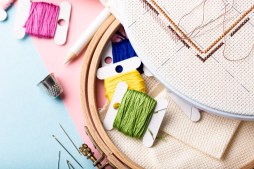The Ultimate Guide to Capsule Wardrobe Planning: Tips and Tricks
In today’s fast-paced world, many people are looking for ways to simplify their lives and reduce decision fatigue. One popular trend that has emerged in the fashion industry is the concept of a capsule wardrobe. A capsule wardrobe consists of a carefully curated collection of versatile clothing items that can be mixed and matched to create a multitude of outfits. If you’re interested in creating your own capsule wardrobe, here are some tips and tricks to help you get started.
Assess Your Current Wardrobe
Before diving into capsule wardrobe planning, it’s important to take stock of your current clothing collection. Begin by emptying out your closet and sorting through each item. Ask yourself if the piece brings you joy, fits well, and aligns with your personal style. Be ruthless in getting rid of anything that doesn’t meet these criteria. Remember, the goal is to have a streamlined collection of clothes that you truly love wearing.

Define Your Style and Color Palette
Once you’ve decluttered your wardrobe, it’s time to define your personal style and color palette. Take some time to consider what types of clothes make you feel confident and comfortable. Are you drawn towards classic pieces or do you prefer more trendy items? Do you lean towards neutral colors or are you more inclined towards bold hues? Understanding your personal style will help guide your future purchases and ensure that all the pieces in your capsule wardrobe work together seamlessly.
When selecting a color palette for your capsule wardrobe, opt for shades that complement each other well. Neutral colors such as black, white, gray, navy, and beige are versatile options that can be easily mixed with bolder accent colors like red or emerald green. Having a cohesive color scheme will make it easier for you to create various outfit combinations without feeling restricted.
Invest in Quality Basics
Building a successful capsule wardrobe relies heavily on investing in high-quality basics that will stand the test of time. These foundational pieces should be versatile enough to be dressed up or down, and they should form the basis for multiple outfits. Consider investing in well-fitted jeans, a tailored blazer, a classic white button-down shirt, a little black dress, and comfortable yet stylish shoes. These timeless pieces will serve as the building blocks of your capsule wardrobe.
When shopping for these basics, pay attention to the fabric quality and craftsmanship. Look for natural fibers like cotton or linen that are durable and breathable. Additionally, ensure that the clothing items are well-constructed with attention to detail. While these pieces may be more expensive upfront, their longevity and versatility will save you money in the long run.
Embrace Mixing and Matching
One of the key benefits of a capsule wardrobe is its ability to create numerous outfit combinations with just a few items. Embrace mixing and matching different pieces to maximize your wardrobe’s potential. Experiment with layering, accessorizing, and combining different textures to create fresh looks.
To make mixing and matching easier, organize your capsule wardrobe by categories such as tops, bottoms, dresses, outerwear, and accessories. This way, you can quickly see all your options when creating outfits. Don’t be afraid to get creative and try new combinations – sometimes unexpected pairings can result in truly unique and stylish ensembles.
In conclusion, creating a capsule wardrobe is an effective way to simplify your fashion choices while still looking chic and put-together. By assessing your current wardrobe, defining your style and color palette, investing in quality basics, and embracing mixing and matching techniques; you’ll be on your way to building a versatile collection of clothes that reflects your personal style while reducing decision fatigue. Happy planning.
This text was generated using a large language model, and select text has been reviewed and moderated for purposes such as readability.


